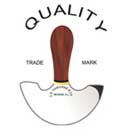
28 Oct Why Every Pro Swears by Tools That Outlive Them
Walk into any seasoned workshop and you’ll notice something right away. The tools aren’t flashy. They’re not the newest models, boxed in plastic with shiny labels.
They’re worn, scarred, and heavy with use. These are tools built to last, often outliving the very people who rely on them. And professionals wouldn’t have it any other way.
More Than Just Steel and Wood
A tool that survives decades carries more than durability. It holds memory. Each groove, each worn handle, tells the story of projects finished and problems solved. Unlike disposable tools, these aren’t meant to be replaced quickly.
They’re meant to serve faithfully for years, becoming part of the rhythm of the craft itself.
Why Longevity Matters
Professionals value tools that outlive them because longevity translates to trust. When a chisel or awl has been in your hand for twenty years and still cuts straight, you know it won’t let you down tomorrow.
That trust allows focus to shift from doubting equipment to mastering the work itself. And in creative or precision-driven trades, that focus is everything.
Two Qualities That Make Tools Timeless
- Strength in materials. High-carbon steel, hardwood handles, and solid construction mean they resist wear and breakage.
- Consistency in performance. Even after years of use, they deliver the same clean cut, strike, or stitch as when they were new.
These qualities separate heirloom tools from those destined for the trash bin.
The Cost of Disposable Choices
Cheap tools might seem practical in the moment, but they often fail when the pressure mounts. Blades chip. Handles snap. Joints loosen. Each failure costs not just money but also time, materials, and confidence.
Over the span of a career, the “savings” of buying cheap evaporate, while the craftsman who invested in lasting tools is still working with the same faithful kit.
Tools as Legacy
There’s another reason pros swear by tools that outlive them: legacy. Many of these tools get passed down. A knife sharpened by a parent is used again by a child.
A hammer worn smooth by one generation builds for the next. Tools like these remind us that craftsmanship doesn’t end when the project does. It extends into the future, carried by the instruments that made it possible.
Built to Outlast, Built to Matter
Every pro swears by tools that outlive them because those tools aren’t just equipment. They’re companions, mentors, and sometimes even teachers. They shape not only the work but also the worker.
In the end, durability is more than endurance. It’s about respect, for the craft, for the material, and for the generations that follow.


